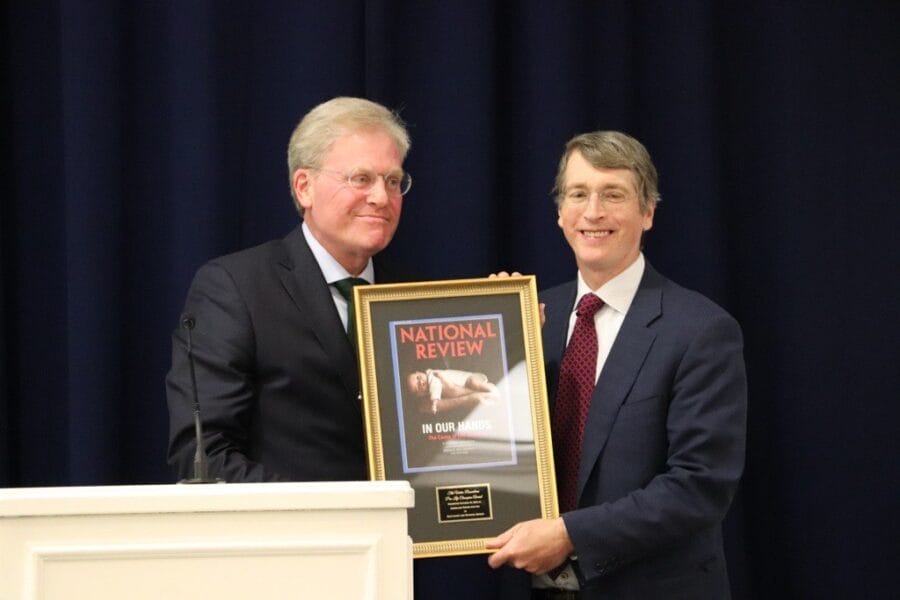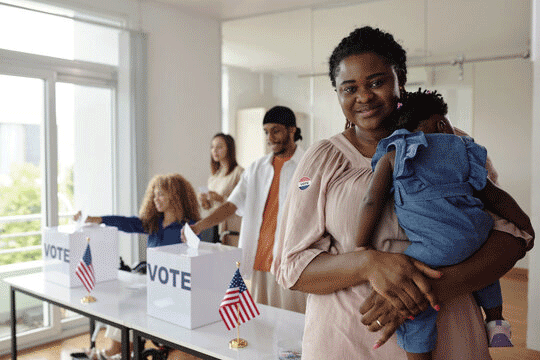Last Friday, Planned Parenthood and other abortion advocacy groups were in Richmond, Virginia lobbying against health and safety regulations for abortion clinics being considered (and now passed) by the Virginia Board of Health. The statements and behavior of the regulation’s opponents prove that they are, in fact, the antithesis of the “women’s advocates” they claim to be. Instead, Planned Parenthood and its allies sought to have the Board prioritize profits and autonomy for the abortion industry over the lives and safety of women.
In seeking to advance their own financial and political interests, abortion advocates blatantly ignored evidence of substandard conditions in Virginia abortion clinics, refusing to even acknowledge or attempt to contradict evidence presented to the Board last Friday. Rather, after hearing testimony about recurring violations and the failure of several Virginia abortion clinics to fulfill “plans of correction” for previously documented health and safety violations, a representative from NARAL Virginia boldly and illogically insisted that there was no demonstrated public health need for the regulations.
Contrary to NARAL’s claim, documents obtained by The Family Foundation of Virginia from the Virginia Board of Health confirm that the continued violations at Virginia’s abortion clinics are widespread.
“These reports from more recent, follow up inspections of abortion centers continue to show dozens and dozens of deficiencies, some worse than before,” said Victoria Cobb, president of The Family Foundation of Virginia. “Not cleaned up. Not fixed. Ongoing. Even after submitting plans to correct these deficiencies they have not done so. The abortion industry continues to claim that it is safe, but these inspection reports are indisputable evidence that nothing could be further from the truth.”
Parroting Planned Parenthood of Metropolitan Washington’s suggested talking points, one man opposing the regulations insisted that the Board should treat abortion no differently than liposuction. If the Board is not regulating liposuction providers, he argued, they cannot regulate abortion facilities. The dramatic delivery of his remarks elicited several snickers of approval from his fellow opponents, but his argument is unpersuasive.
Abortion clinic regulations like Virginia’s are a sensible and medically appropriate response to the current and growing problem of unsafe, inadequately regulated “back alley” abortion clinics. In just the last three years, officials in at least 15 states have launched investigations into abortion clinics and individual providers for substandard patient care and conditions.[1] Clearly, Kermit Gosnell is not an aberration, but the tip of the proverbial iceberg.
Moreover, abortion clinic regulations do not “single out” abortion providers for unfair treatment. Federal courts have uniformly rejected the argument that clinic regulations violate abortion providers’ legal rights to equal protection. Rather, the courts have held that abortion is “a unique act” that is “rationally distinct” from all other types of medical procedures. As such, a state may choose to regulate abortion while leaving other medical or surgical procedures unregulated. [2]
Another opponent offered a flippant satire, telling the Board she was an “abortion survivor” who was traumatized by a clinic’s failure to meet certain construction standards set forth in the regulation. Not only did she callously demean the very real physical and emotional complications experienced by many women who have had abortions, she completely misrepresented the purpose of the regulations. Requiring a minimum width of a hallway and size of a parking lot at a facility performing abortions is not for aesthetics, but to ensure that a patient in an emergency situation may be reached and treated in a timely and safe fashion.
There are, unfortunately, many recent examples of patients needing urgent care from immediate complications resulting from an abortion.
During the Board’s discussion before its final vote on the regulations, one Board member described her recent visit to a local abortion clinic. She wanted to assess, first hand, the current conditions of the clinic and whether the physical plant standards that the Board was considering were necessary. She described to her fellow Board members a set of stairs leading up to the second floor clinic that appeared structurally unsound, a narrow hallway that would be difficult to bring a patient through on a gurney in an emergency situation, and a sink that could not allow a doctor to properly scrub up.
In the face of this evidence, abortion advocates continue to contend that the standards under consideration by the Board of Health and designed to protect women’s health and safety would be too costly, and that Virginia abortion clinics would shut their doors rather than make the needed improvements.
Claims that the abortion industry cannot afford the improvements necessary for women’s health and safety are suspect.
Financial reports for the nation’s largest abortion chain, Planned Parenthood, that were released in January document that revenue for Planned Parenthood Federation of America and its affiliates’—45 percent of which came from American taxpayers—exceeded its expenses by $242.9 million between June 2010 and June 2012. During hard economic times, the abortion chain made nearly a third of a million dollars in profit every single day.
Noah Mamber, the Public and Legislative Affairs Manager of Planned Parenthood of Metropolitan Washington, signed his email seeking to drum up opposition to the Virginia regulations with “Keep abortion legal and available.” Tellingly absent from Planned Parenthood’s concerns: that abortion be safe.
Ironically, Planned Parenthood’s opposition to the Virginia regulations came on very same day that the grisly details of the Philadelphia abortionist Kermit Gosnell’s trial began to receive attention from the national press. Abortion clinics like Kermit Gosnell’s West Philadelphia “House of Horrors” made abortion available – but clearly not safe.
Fortunately, the Board of Health rejected the notion that the abortion industry’s profits deserve more protection than the health and safety of the women of Virginia and voted in favor of the regulations 11-2. The regulations now head to Governor Bob McDonnell for final approval.
[1] Those states are Alabama, California, Delaware, Florida, Illinois, Kansas, Louisiana, Maryland, Massachusetts, Michigan, New Jersey, New Mexico, North Dakota, Pennsylvania, and Texas. For more information about substandard conditions at the nation’s abortion clinics, see D.M. Burke, “Exposing Substandard Abortion Facilities: The Pervasiveness of True ‘Back Alley’ Abortions,” Defending Life 2012, pp. 47-53 (Americans United for Life, 2012).
[2] See Planned Parenthood v. Casey, 505 U.S. 833, 852 (1992); Greenville Women’s Clinic v. Bryant, 222 F.3d 157, 172-175 (4th Cir. 2000), cert denied, 531 U.S. 1191 (2001); and Women’s Medical Center of Northwest Houston v. Bell, 248 F.3d 411 (5th Cir. 2001).




